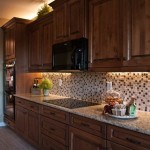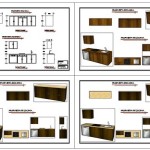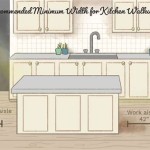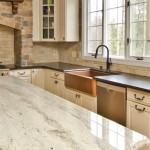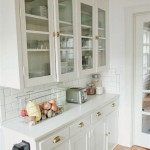What Are PVC Kitchen Cabinets?
Polyvinyl chloride (PVC) kitchen cabinets have become increasingly popular due to their durability, affordability, and versatility. These cabinets are constructed from a durable plastic that is designed to withstand water, heat, and chemicals, making them ideal for use in kitchens. In this guide, we will provide an in-depth look at the essential aspects of PVC kitchen cabinets, exploring their benefits, types, and installation considerations.
Benefits of PVC Kitchen Cabinets
PVC kitchen cabinets offer numerous benefits that have contributed to their growing popularity. These advantages include:
- Durability: PVC is a highly durable material that is resistant to water, heat, and chemicals. This makes PVC cabinets ideal for kitchens, where they are exposed to moisture, spills, and heat from cooking.
- Affordability: Compared to other kitchen cabinet materials, such as wood or metal, PVC is a more affordable option. This makes it a cost-effective choice for homeowners looking to update their kitchen without breaking the bank.
- Versatility: PVC cabinets are available in a wide range of colors, styles, and finishes, making them suitable for any kitchen décor. They can be customized to match the existing design aesthetic or create a completely new look.
Types of PVC Kitchen Cabinets
There are two main types of PVC kitchen cabinets:
- Solid PVC Cabinets: These cabinets are constructed from a solid PVC material, which provides superior durability and water resistance. Solid PVC cabinets are ideal for areas with high moisture levels, such as near sinks or dishwashers.
- PVC Veneer Cabinets: These cabinets are made with a PVC veneer over a substrate material, such as plywood or MDF. PVC veneer cabinets offer a more affordable option than solid PVC cabinets and are suitable for areas with lower moisture levels.
Installation Considerations for PVC Kitchen Cabinets
Installing PVC kitchen cabinets requires careful planning and preparation. Here are some key considerations:
- Measure and plan: Before purchasing cabinets, it is essential to take accurate measurements of your kitchen space and plan the layout carefully. Consider the location of appliances, windows, and doors to ensure a seamless installation.
- Prepare the walls: The walls where the cabinets will be installed should be level and plumb. If necessary, use shims or leveling compound to create a flat surface.
- Install the cabinets: PVC cabinets are typically attached to the wall using screws or other fasteners. Follow the manufacturer's instructions carefully and ensure that the cabinets are level and secure.
- Caulk and seal: Once the cabinets are installed, caulk and seal any gaps around the edges to prevent moisture penetration and ensure a finished appearance.
Conclusion
PVC kitchen cabinets offer a durable, affordable, and versatile option for homeowners looking to upgrade their kitchens. Understanding the benefits, types, and installation considerations of PVC cabinets will help you make an informed decision when choosing and installing these cabinets in your home. By following the guidelines outlined in this guide, you can enjoy the benefits of PVC kitchen cabinets for years to come.

Full Solution Of Pvc Kitchen Cabinets For Villa House Apartments

A Guide To Modern Pvc Kitchen Cabinets And

What Is Pvc And Why Choose Material For Kitchen Cabinets 1 Jpg

Why Use Pvc Kitchen Cabinets For Modular Kitchens Housing News

Full Solution Of Pvc Kitchen Cabinets For Villa House Apartments

What Is Pvc And Why Choose Material For Kitchen Cabinets 4 Jpg

A Guide To Modern Pvc Kitchen Cabinets And

Modern Pvc Kitchen Cabinet Designs A Guide Beautiful Homes

What Is Pvc And Why Choose Material For Kitchen Cabinets 3 Jpg

Types And Uses Of Pvc In Modular Kitchen Cabinets Designcafe
Related Posts

